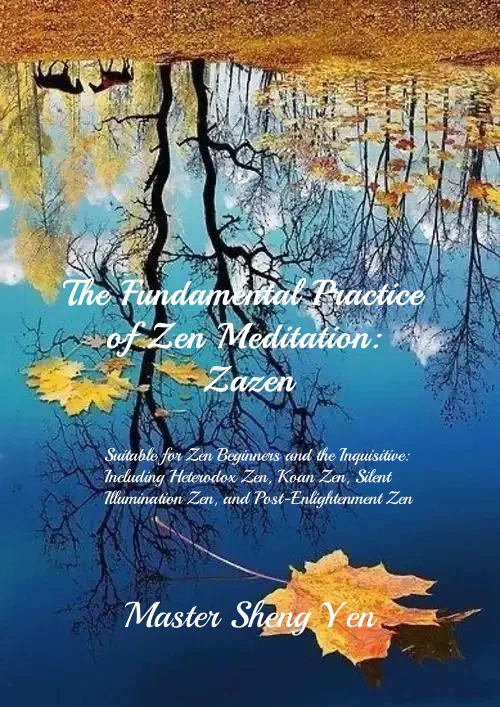The Fundamental Practice of Zen Meditation Zazen
This book is suitable for scholars interested in Zen meditation, those new to Zen practice, and individuals seeking clarity on Zen methods. It is a compilation of Master Sheng Yen’s lifelong teachings on Zen meditation, encompassing foundational sitting meditation techniques, including adjustments for the body and mind, specific guidance on leg, spine, hand, shoulder, tongue, mouth, and eye positioning, walking meditation methods, breath regulation, and mental adjustments. It provides detailed descriptions of Heterodox Zen, Zen sitting meditation, Silent Illumination Zen, Koan Zen, and post-enlightenment sitting meditation. It serves as a specific guide to meditation methods and is an essential book for practitioners of Zen meditation. I Want to Buy It
Excerpts from the book:
Hui-neng (638-713), who succeeded Hung-jen as the Sixth Patriarch, was not an advocate as sitting as the path to enlightenment. With him, we have a distinction between tso-ch’an which attains enlightenment through sitting, and tso-ch’an which attains enlightenment without sitting. Hui-neng had a different interpretation of what tso-ch’an means. He said that when there is no mind, or no thoughts arising, that is called “sitting” (tso). When you see internally that the self-nature is not moving, that is Ch’an.
This was different from the sitting tso-ch’an of Bodhidharma. The Sixth Patriarch took his inspiration from the Samadhi of One Act, described in the Manjusri Sutra mentioned above. The method is to put your mind steadfastly on the One Dharma Realm , in which there is no differentiation into forms. Quoting from the Vimalakirti Sutra , he also said, “The straightforward mind is the Path.” Its meaning is that all forms are equivalent to one form. Any time, any place, whether walking, standing, sitting or lying down, there is no situation that is not an opportunity to practice tso-ch’an. In this view sitting was not only not necessary, but could be a hindrance. I Want to Buy It











